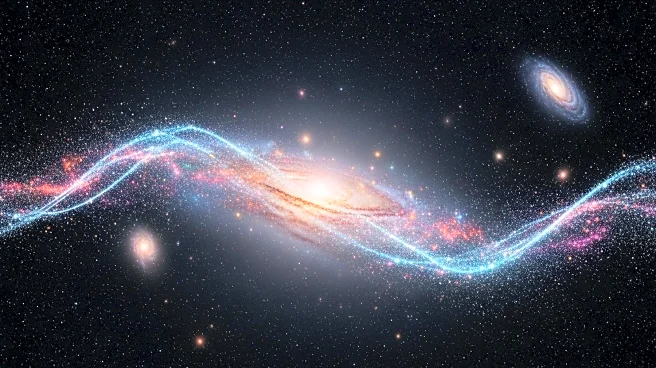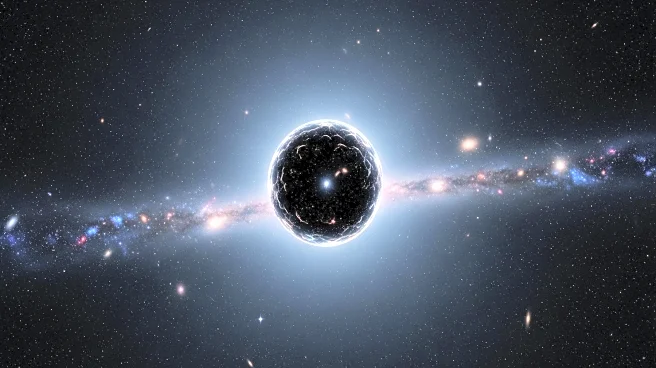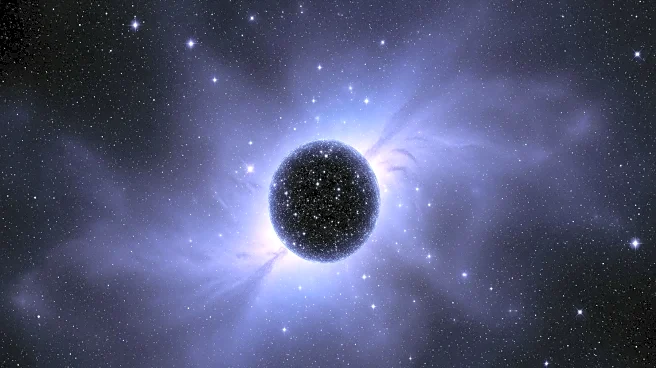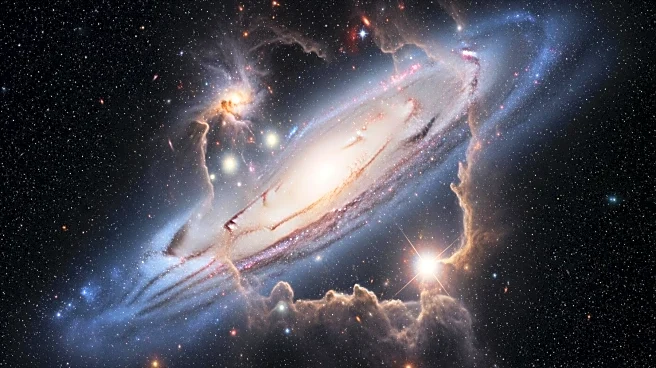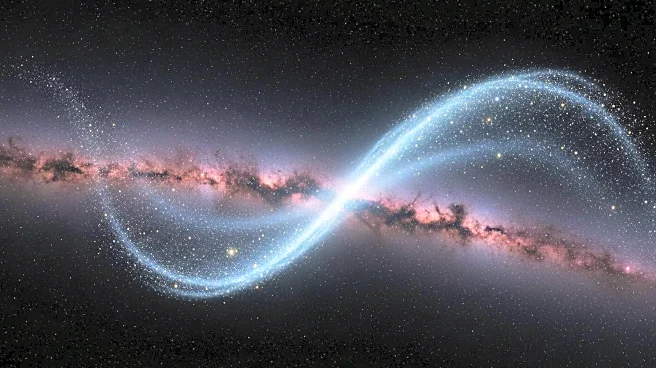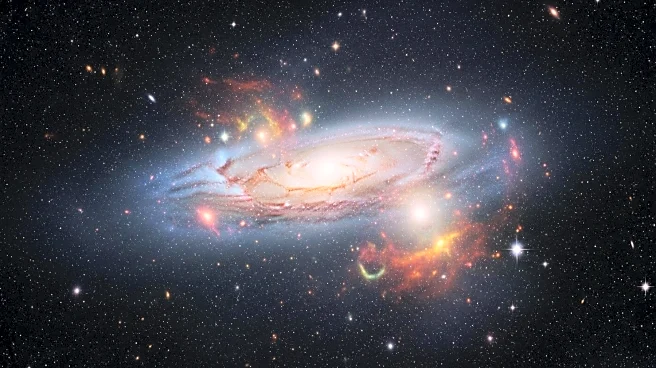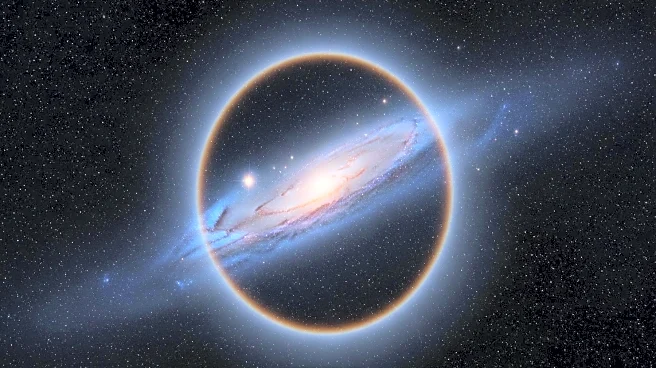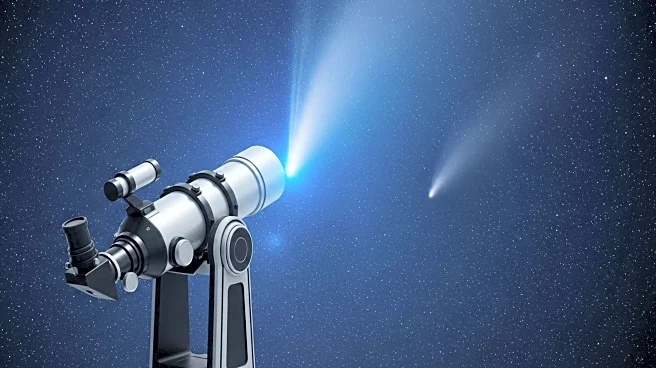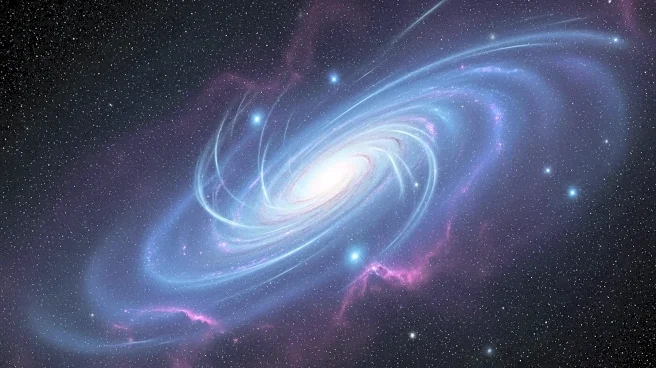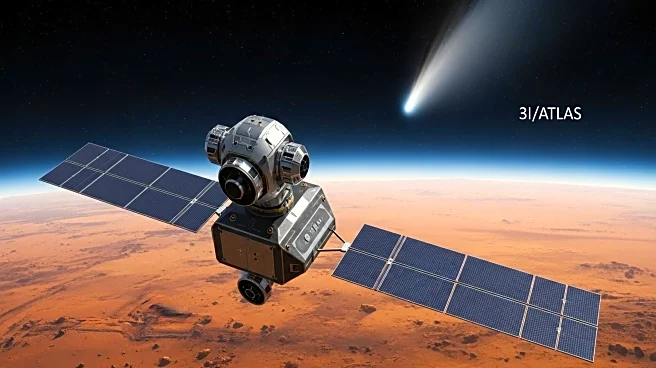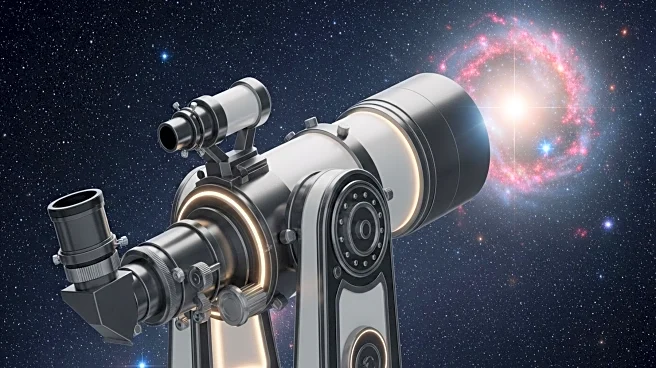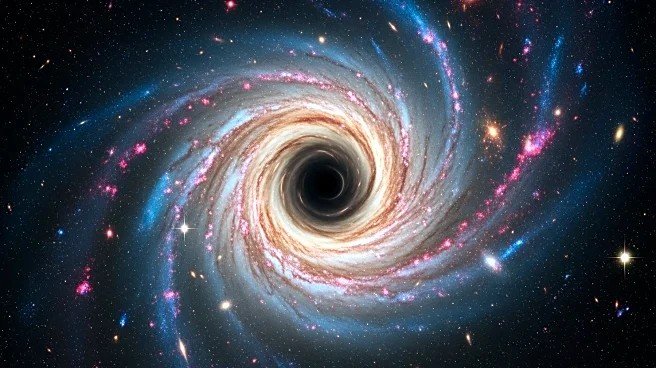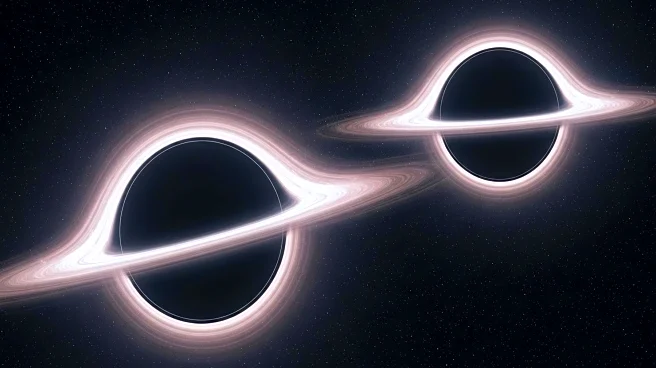What is the story about?
What's Happening?
The Gaia mission has mapped over a billion stars in the Milky Way, revealing a 'Great Wave' propagating through the galaxy's outskirts. Researchers, led by Eloisa Poggio, used data from 20,000 massive young stars to trace this wave, which may have originated from a past collision with another galaxy. The wave is characterized by stars' vertical motions, suggesting complex dynamics beyond the galaxy's warped disk.
Why It's Important?
This discovery provides new insights into the Milky Way's structure and history, potentially linked to a significant event like a galactic collision. Understanding these dynamics can inform models of galaxy formation and evolution, impacting our knowledge of cosmic history and the forces shaping galaxies. It also highlights the capabilities of the Gaia mission in uncovering hidden aspects of our galaxy.
What's Next?
Further analysis of Gaia data and improved simulations will help identify the wave's origin and its implications for the Milky Way's evolution. Upcoming Gaia releases and other datasets will provide more detailed information, aiding astronomers in unraveling the galaxy's past.
Beyond the Headlines
The study suggests a possible connection between the 'Great Wave' and the Radcliffe Wave, another structure closer to the Sun. This raises questions about the interconnectedness of galactic phenomena and their collective impact on the Milky Way's dynamics.
AI Generated Content
Do you find this article useful?
